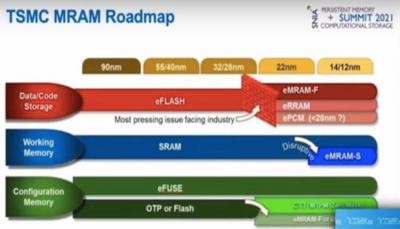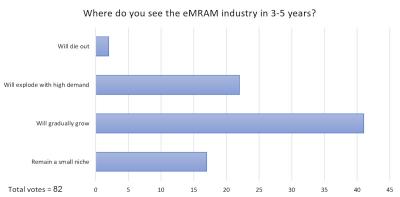Embedded MRAM solutions are now entering the market, as leading foundries Samsung, TSMC and GlobalFoundries are scaling-up and ramping up their solutions.
This has been a slow process, as getting next-generation technologies into large fab is never an easy task, but we are finally seeing these foundries start to offer these technologies to their customers.
It will be very interesting to see how the next years play out in the embedded-MRAM market. We recently ran a poll on our social media channels (Twitter and LinkedIn), the results of which can be seen in the image above.
Most people seem to believe that the embedded MRAM will grow in the next 3-5 years, some think it will enjoy high demand and explosive growth, while others are more conservative, thinking the rise in adoption will be more moderate. Of course keep in mind that this was just a social-media poll, with limited responses.
Samsung started offering e-MRAM in 2019, using the company's 28nm FD-SOI process. In February 2021 the company said it has improved its MTJ function and is now expanding its MRAM offering to more applications - the automotive, wearable, graphic memory, low level cache, internet of things and edge artificial intelligence markets. Samsung's latest MRAM die is 40% smaller than SRAM, and it is 1,000 times faster than its eFlash memory.
GlobalFoundries (together with Everspin) started to offer e-MRAM solutions in early 2020, in its 22FDX platform. GF's eMRAM is designed as a replacement for high-volume embedded NOR flash (eFLASH). The company says that its advanced eMRAM provides a "cost-effective solution for low-power, non-volatile code and data storage applications". GF is working to scale-down its MRAM to 12 nm processes.

TSMC is offering 22nm eMRAM option as an eFlash alternative. TSMC is developing 14 nm and 12nm MRAM options, to replace SRAM. TSMC says that its eMRAM is also a possible replacement for configuration memory (eFUSE / OTP / Flash).
Back in 2019 Intel announced that its 22-nm eMRAM is production ready on full 300 mm wafers. The company did not update on its embedded MRAM technology since 2019.


